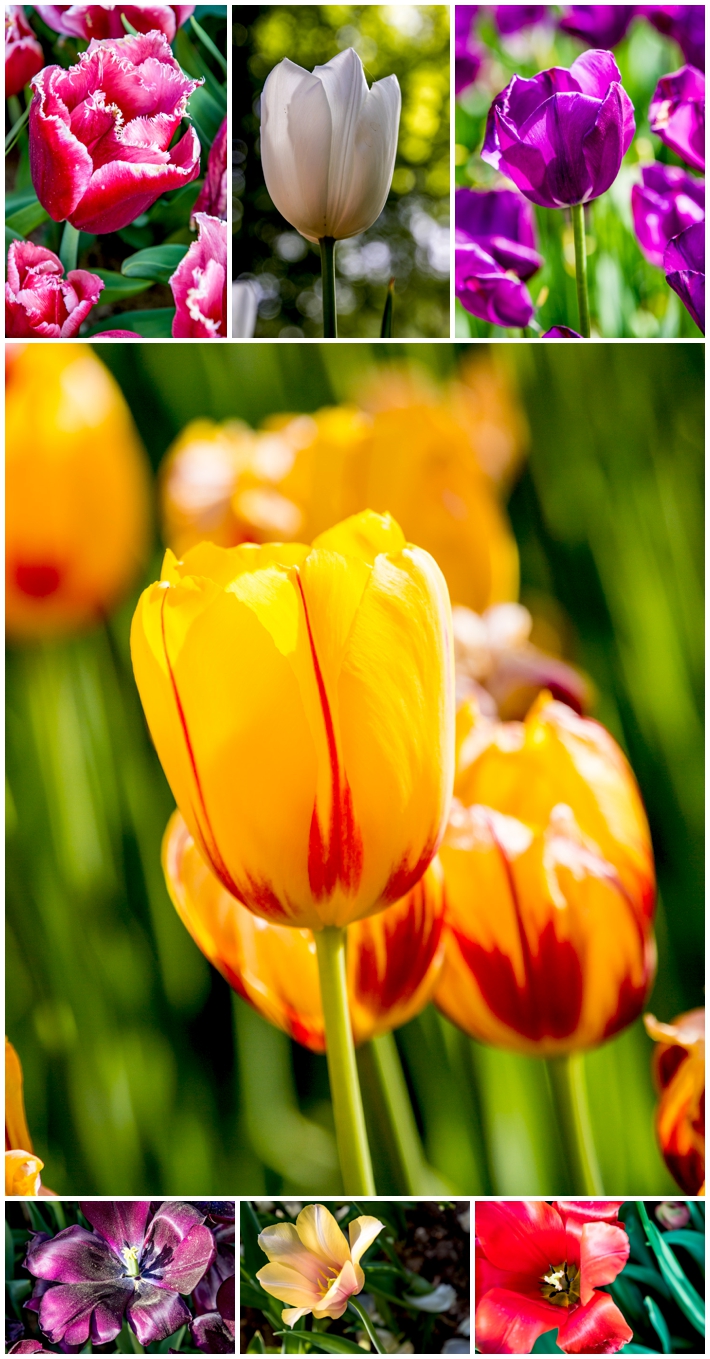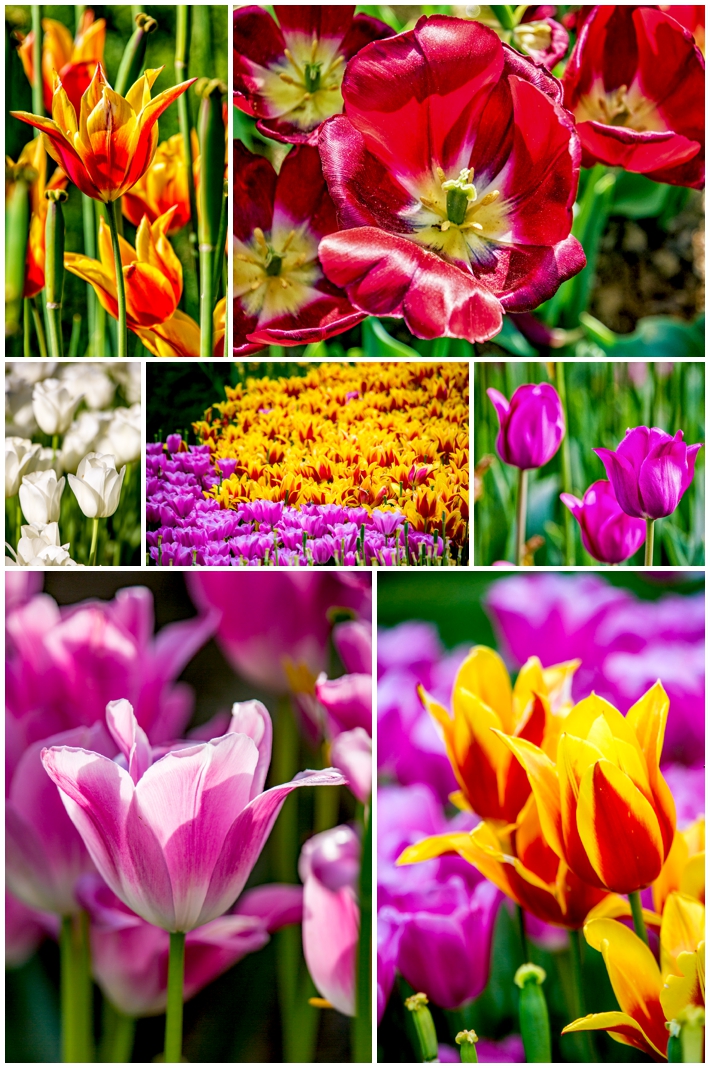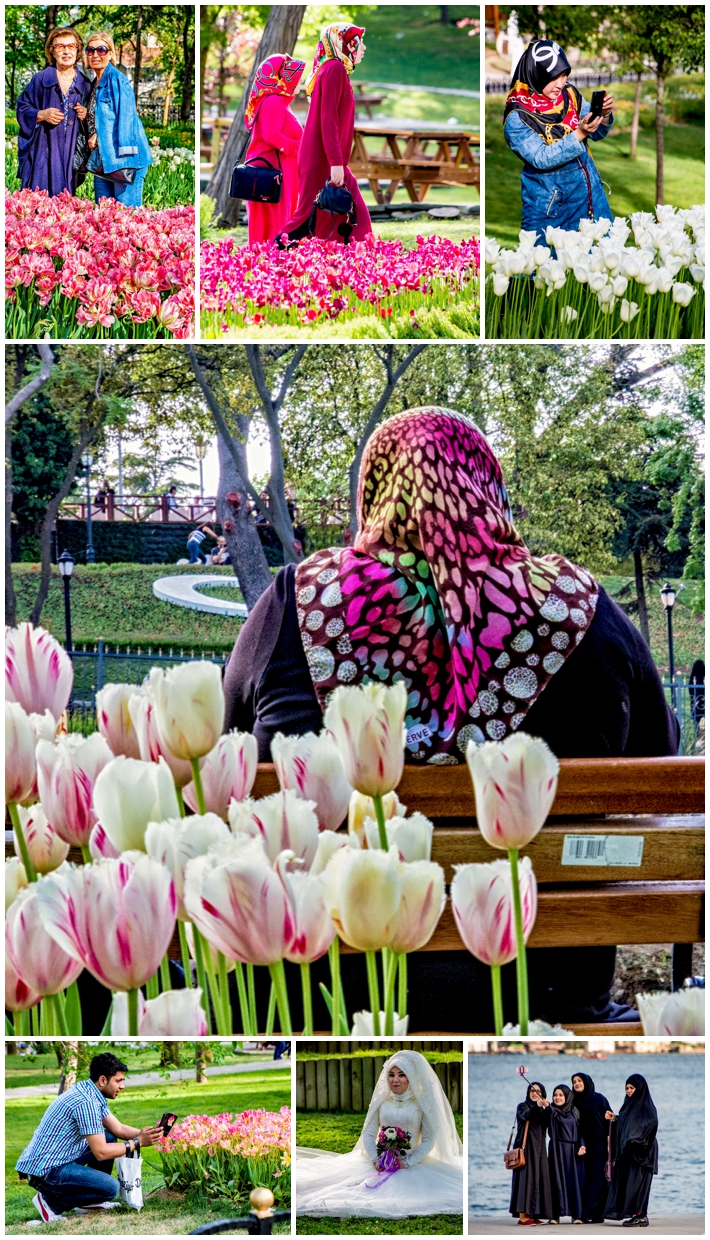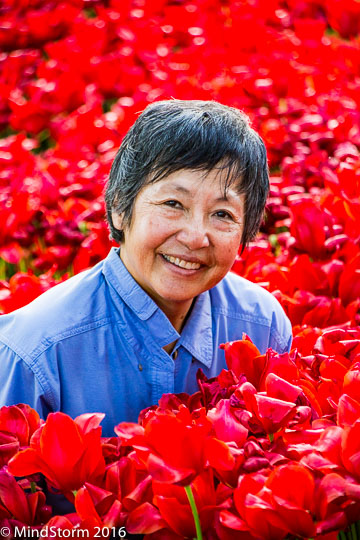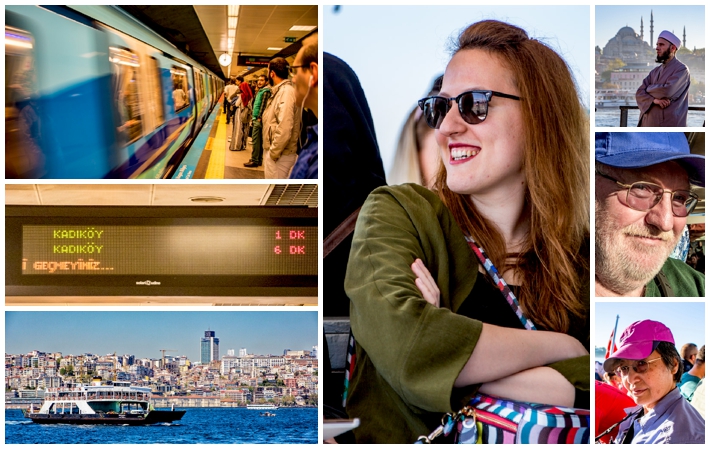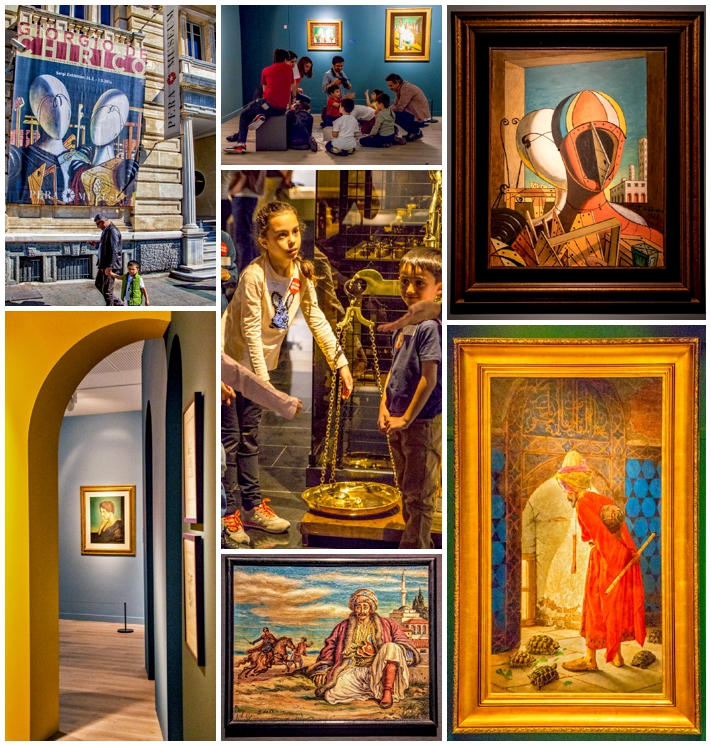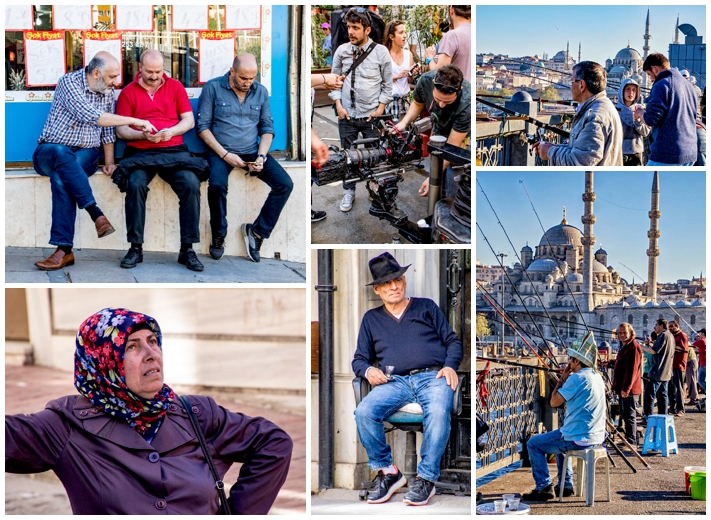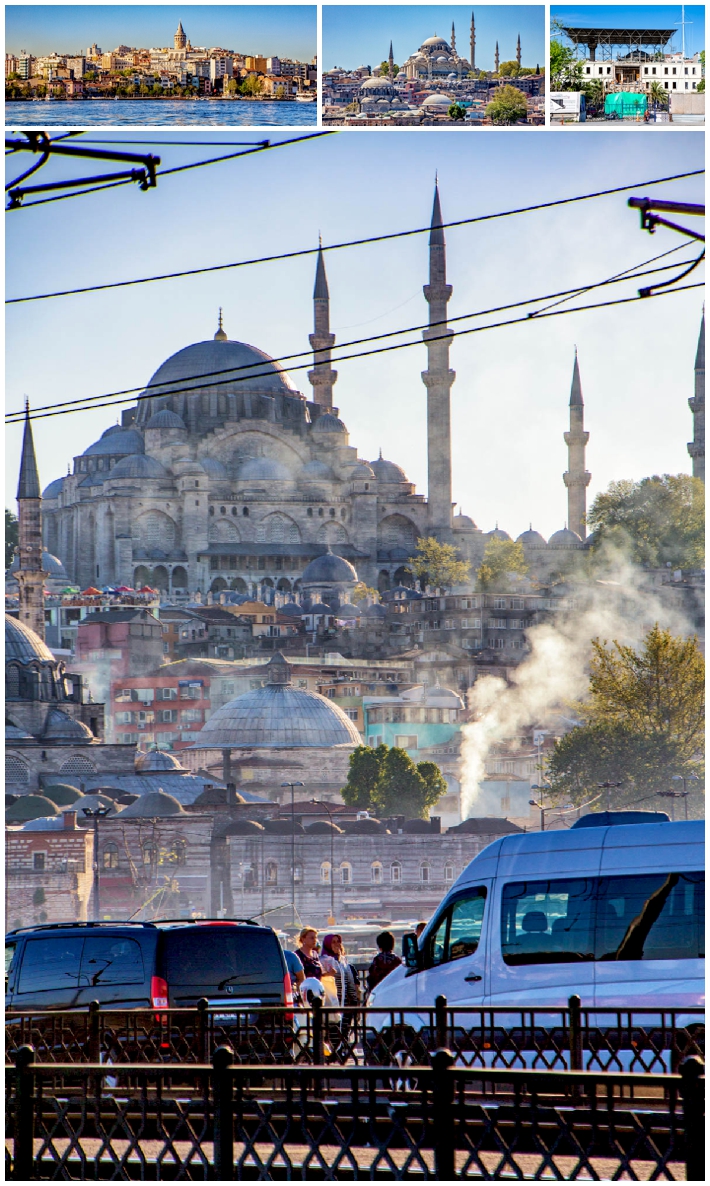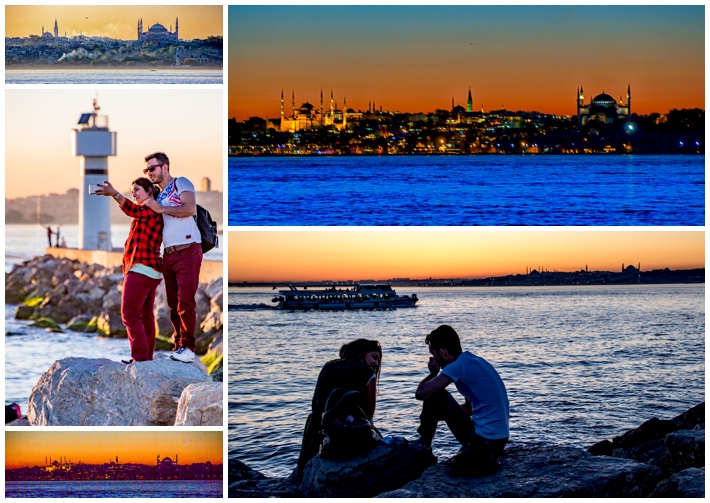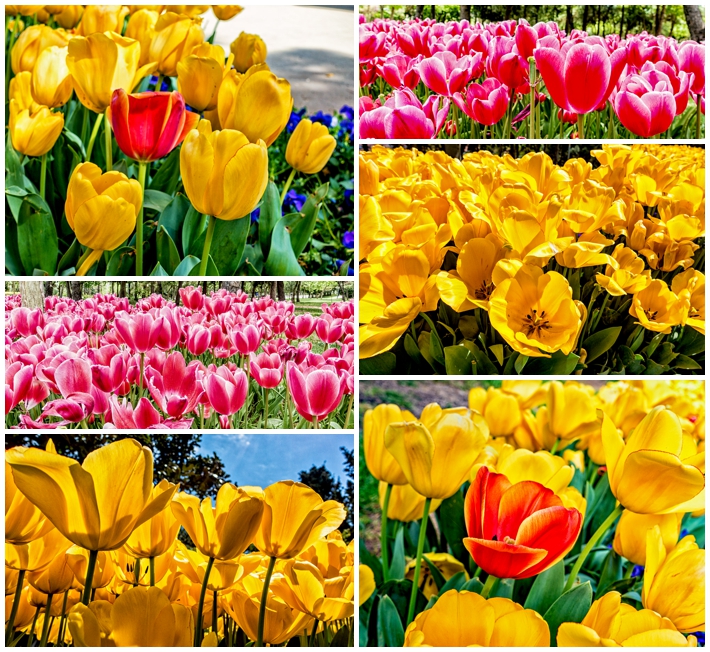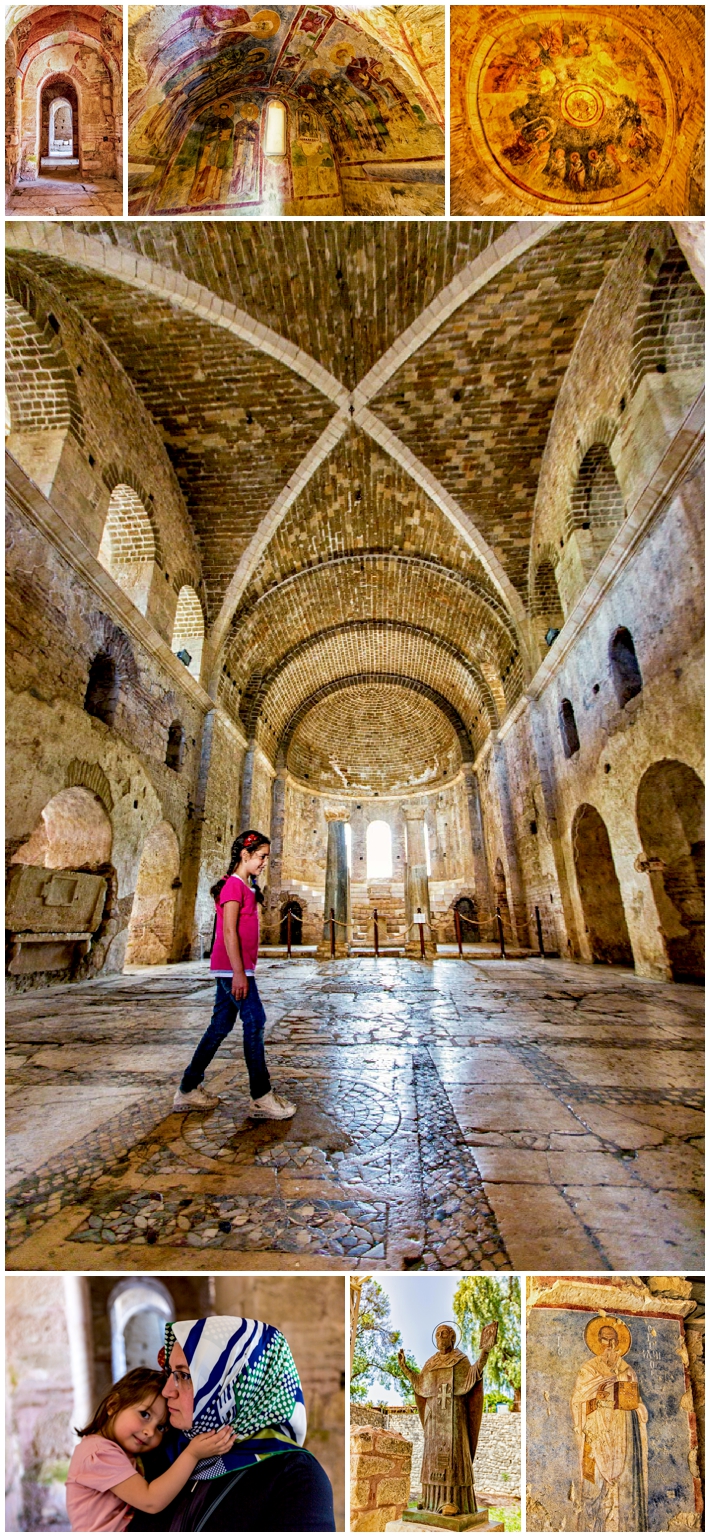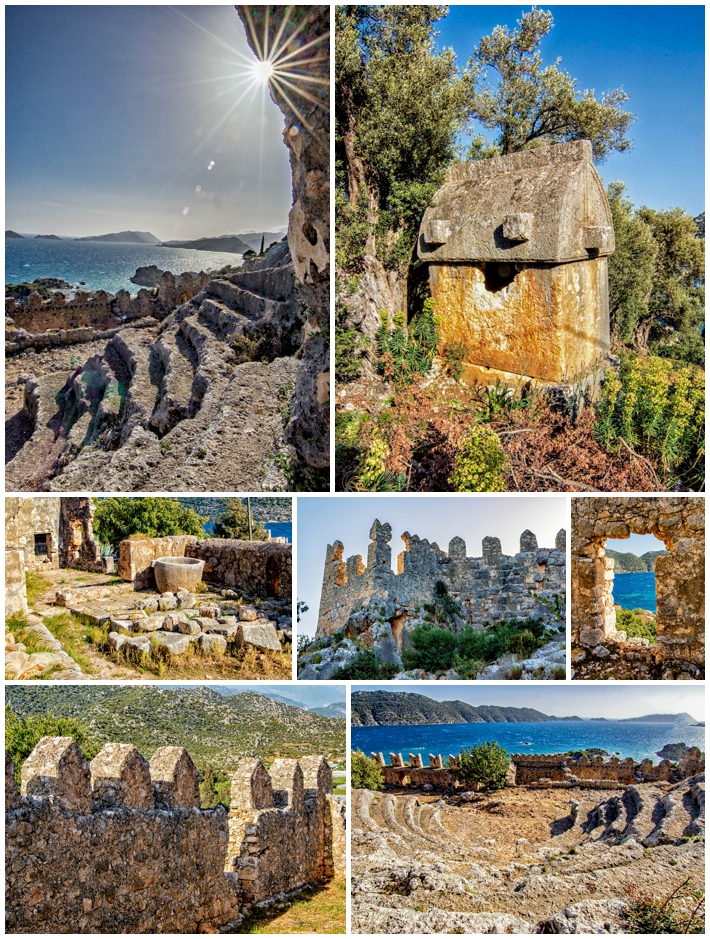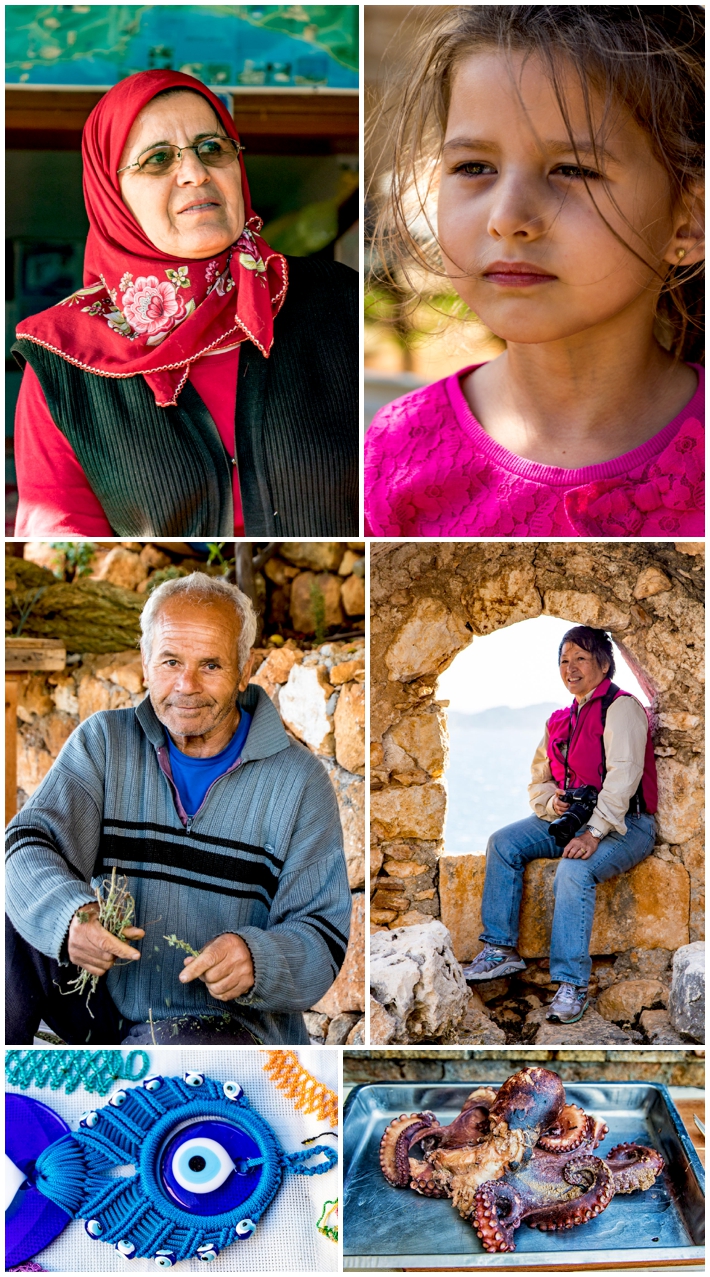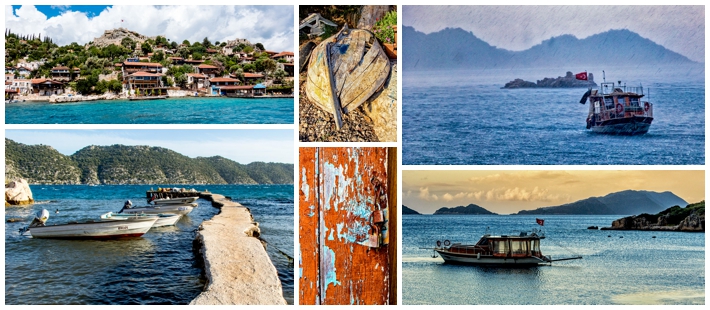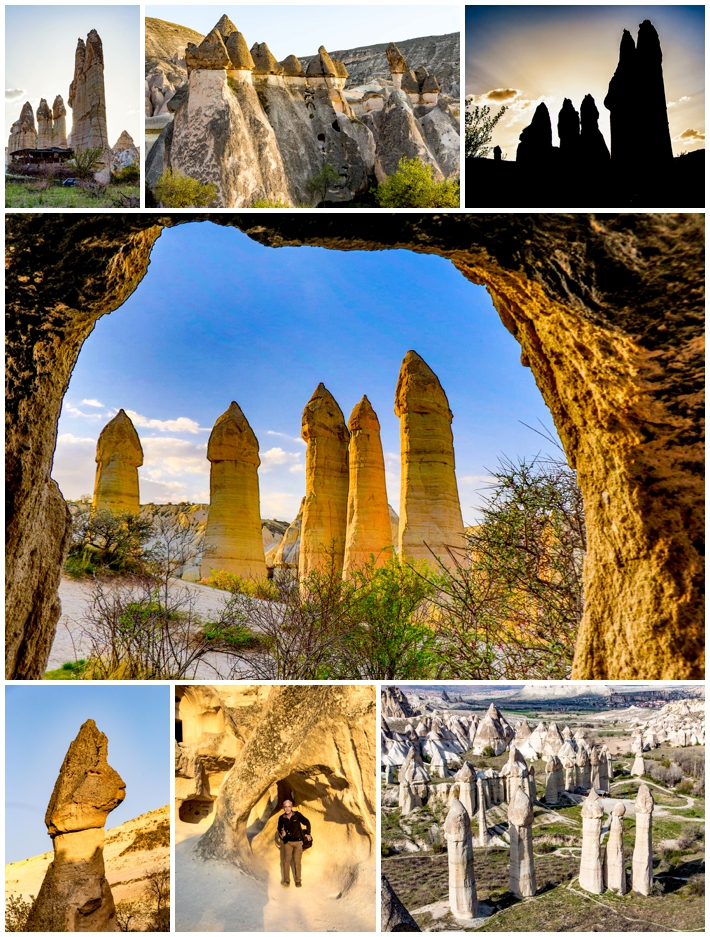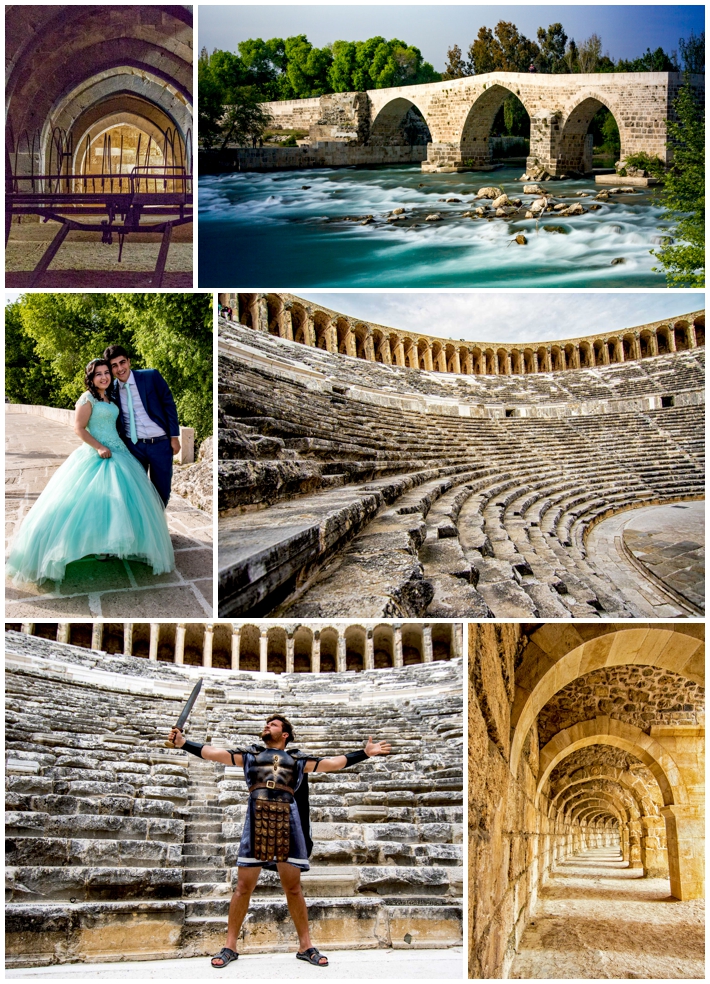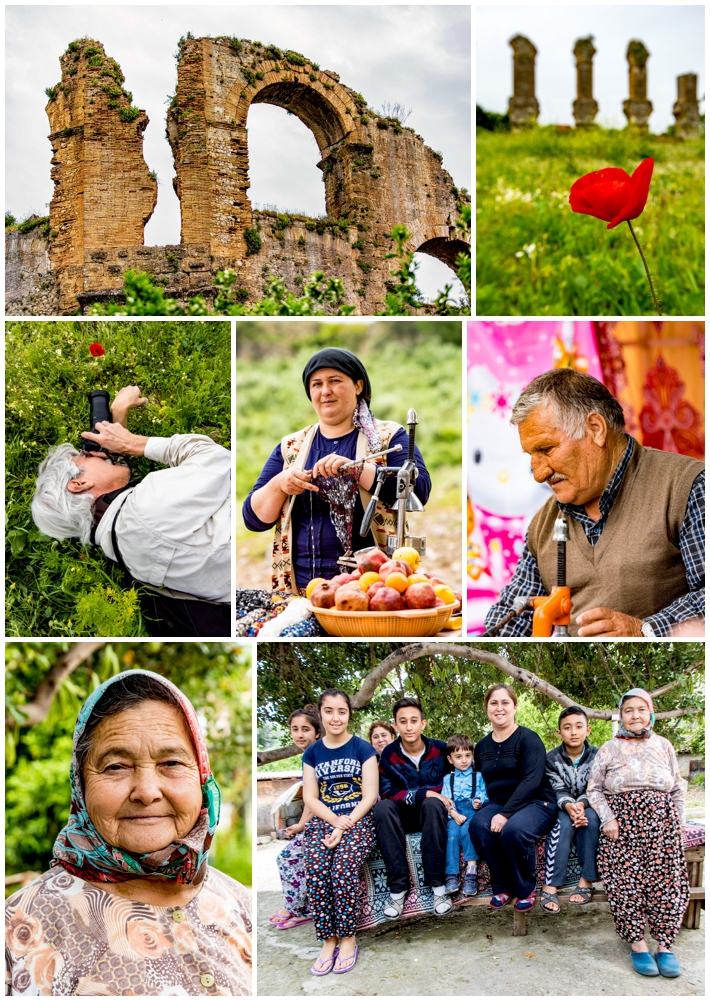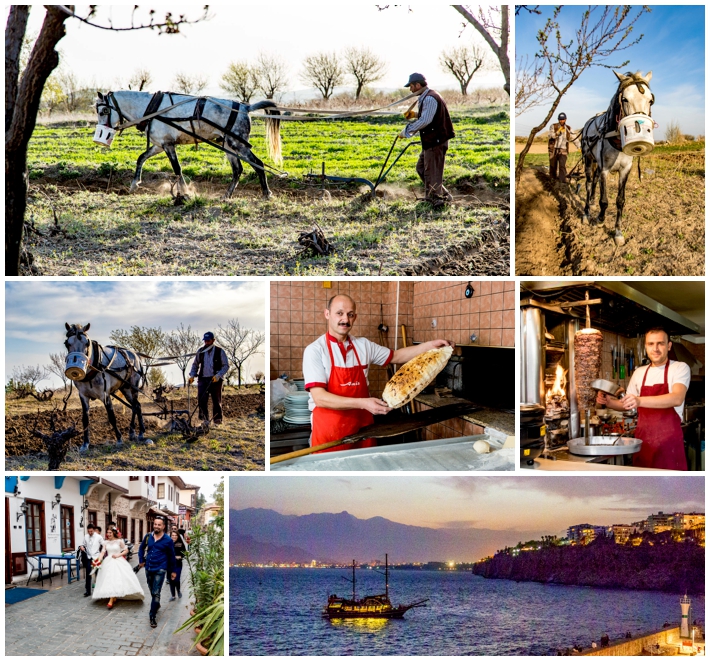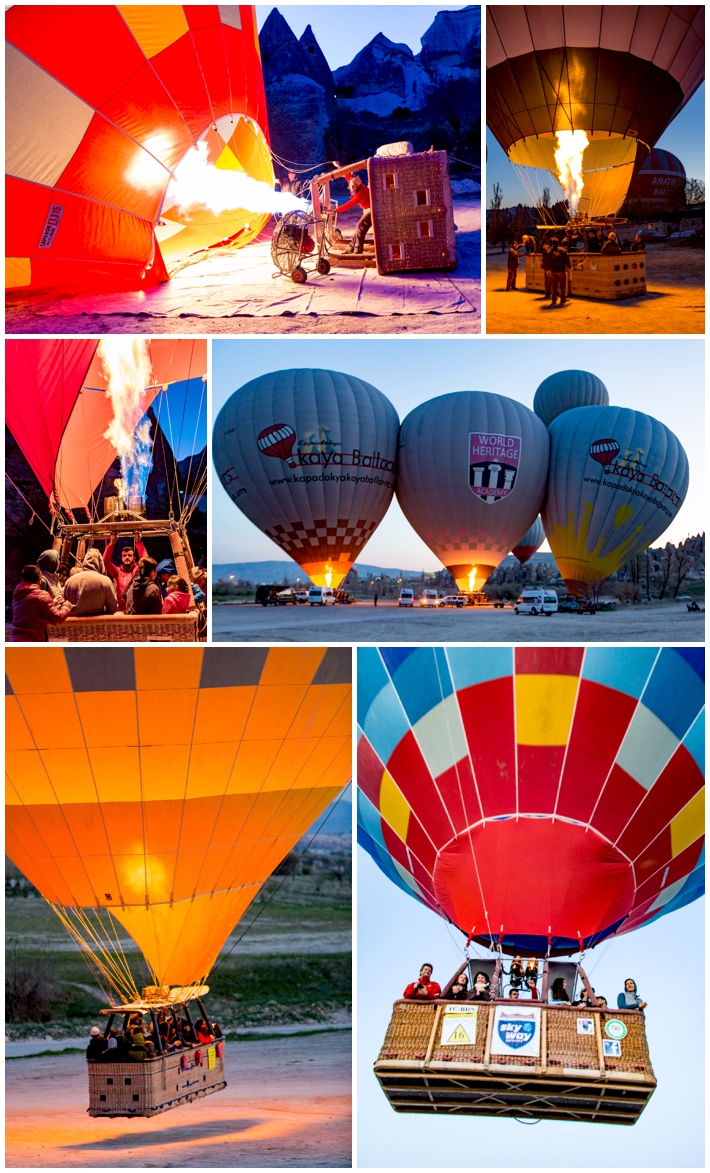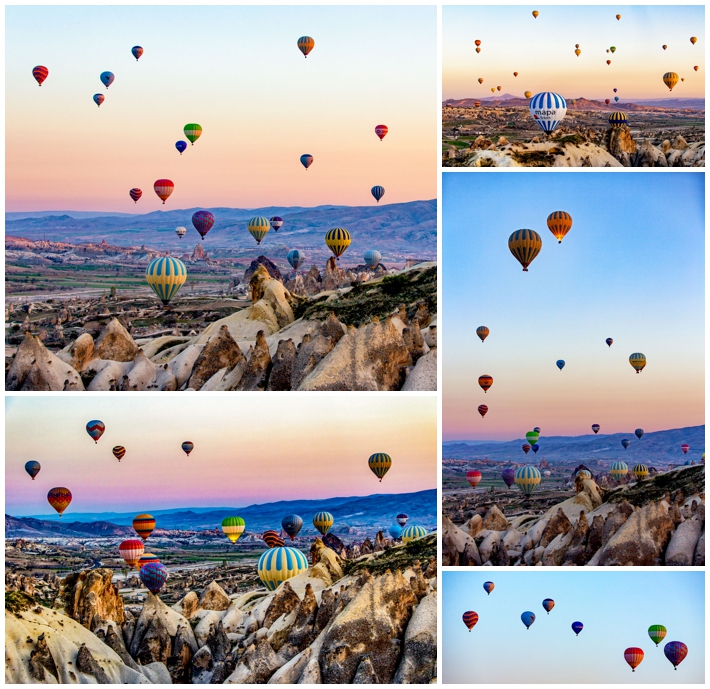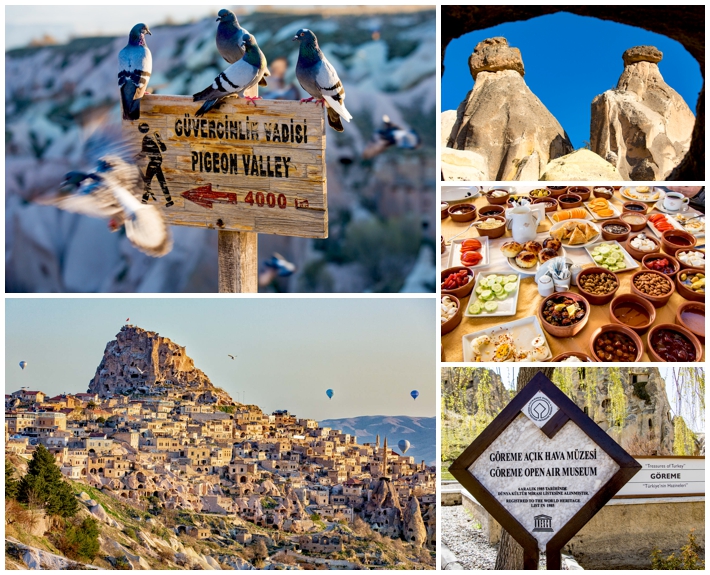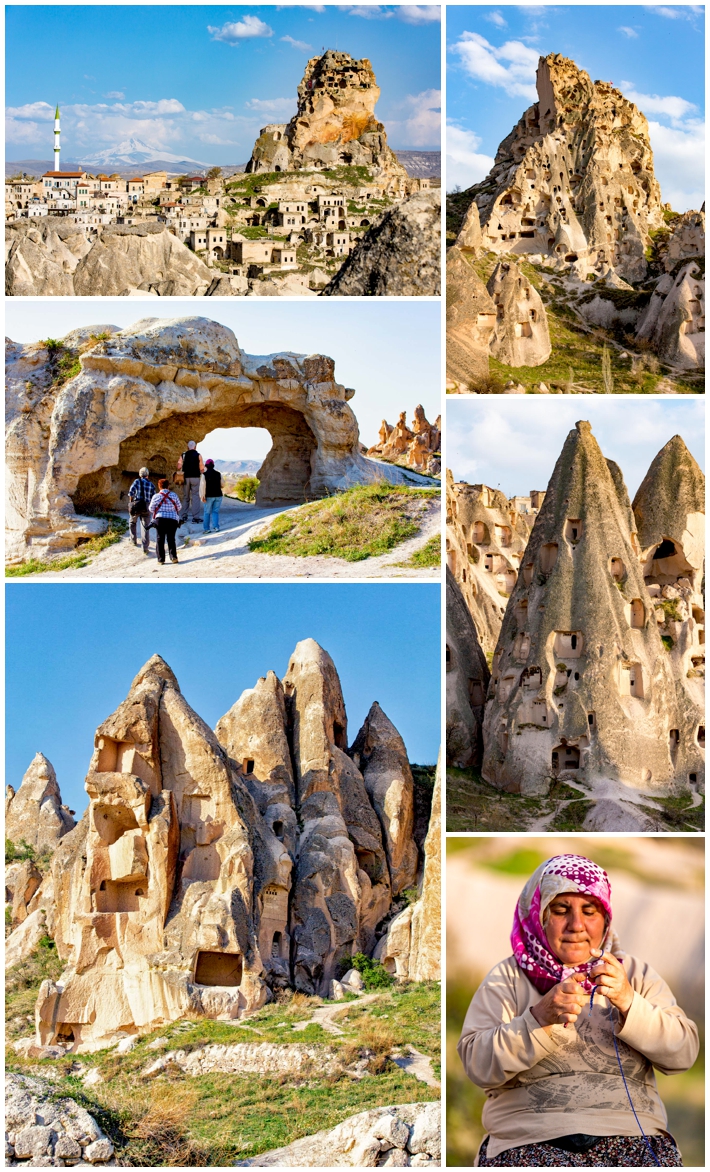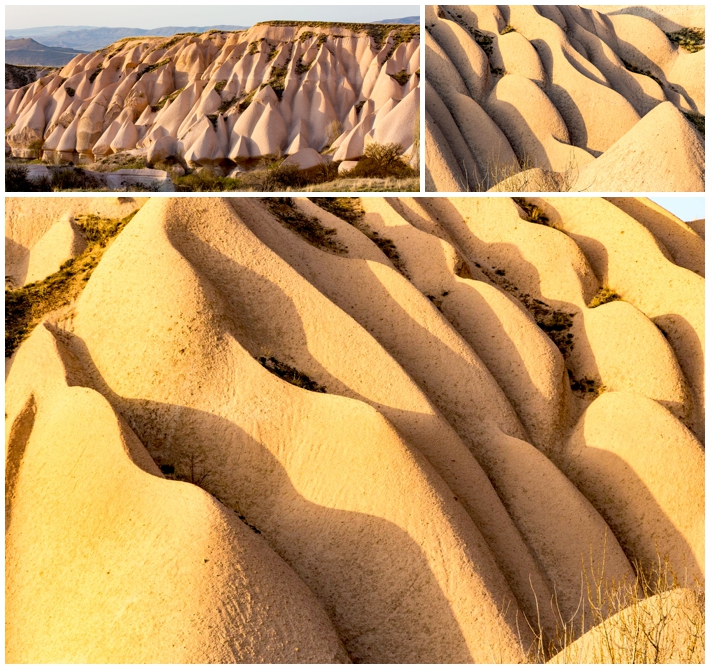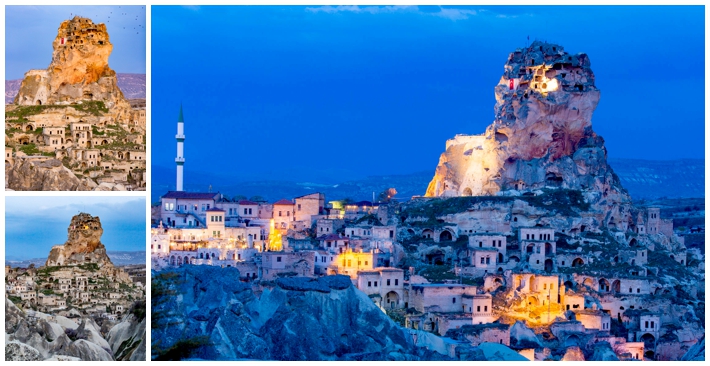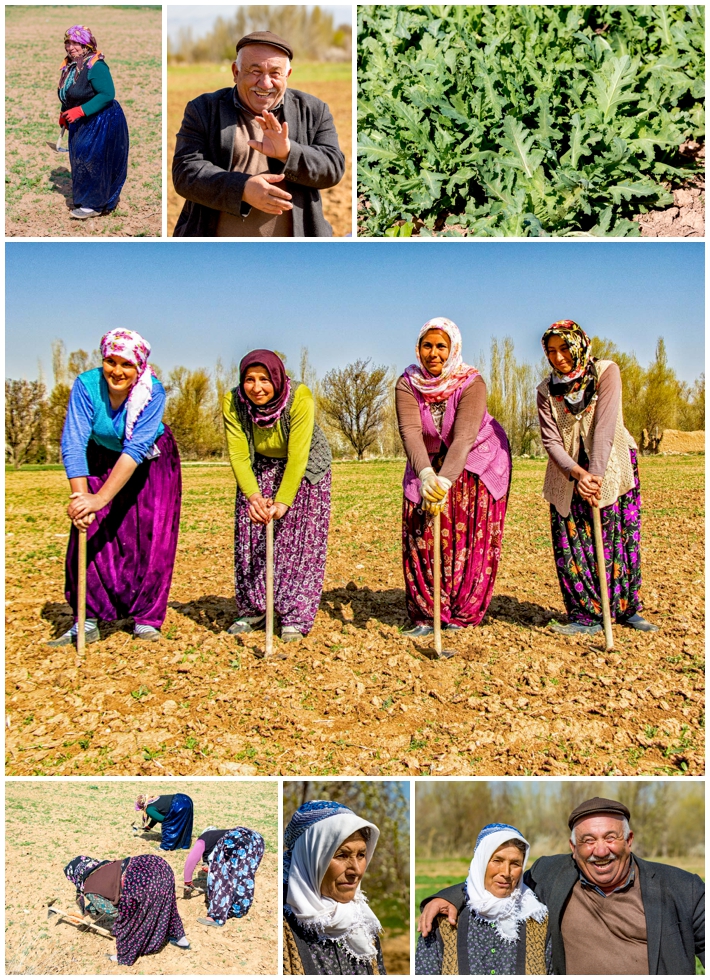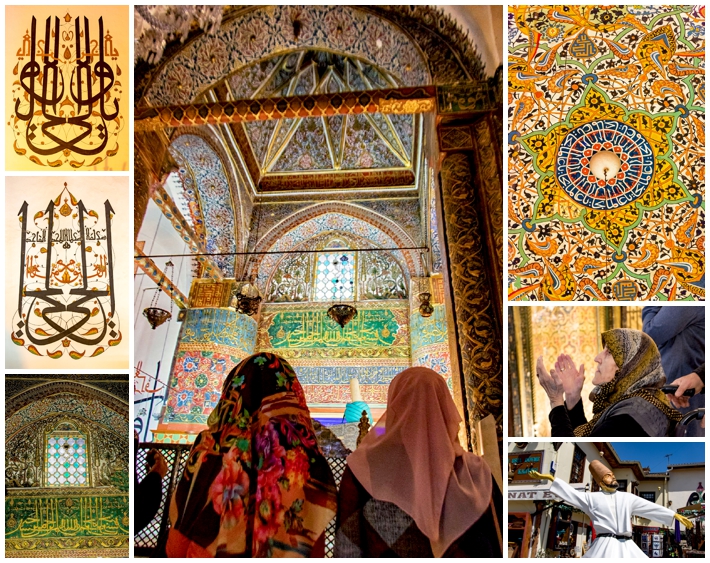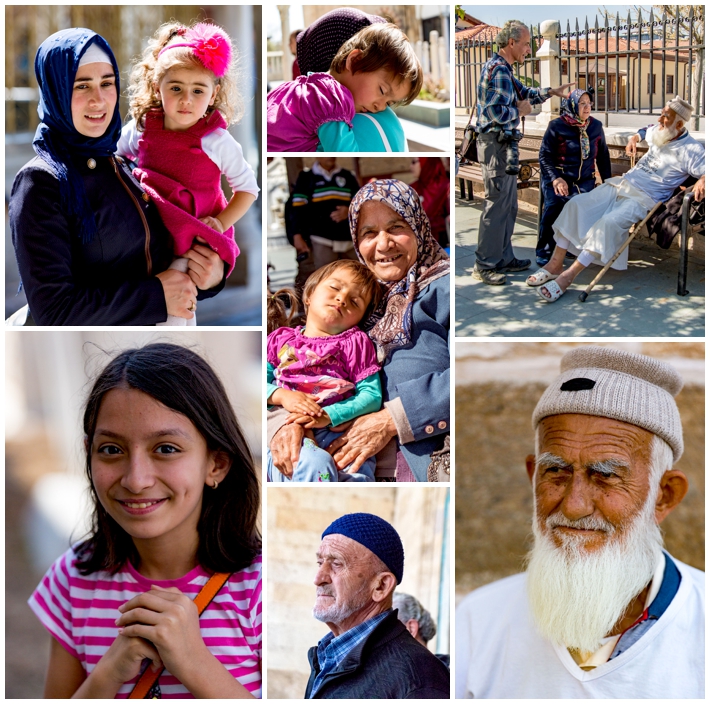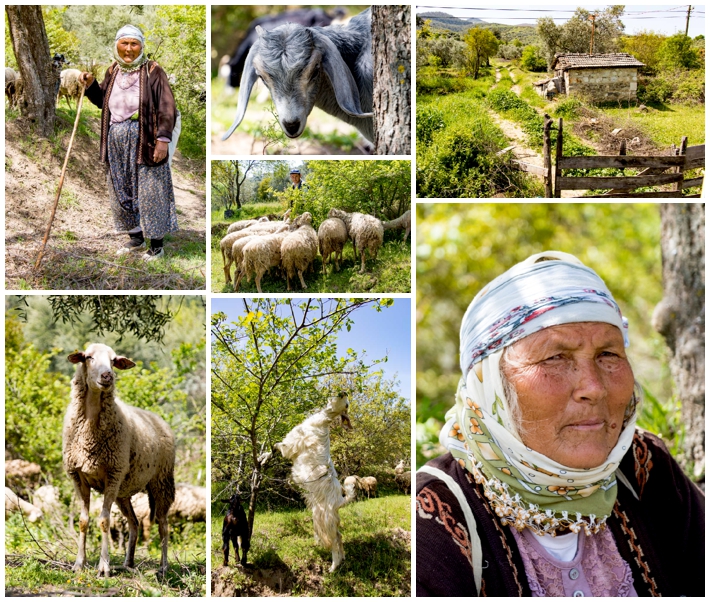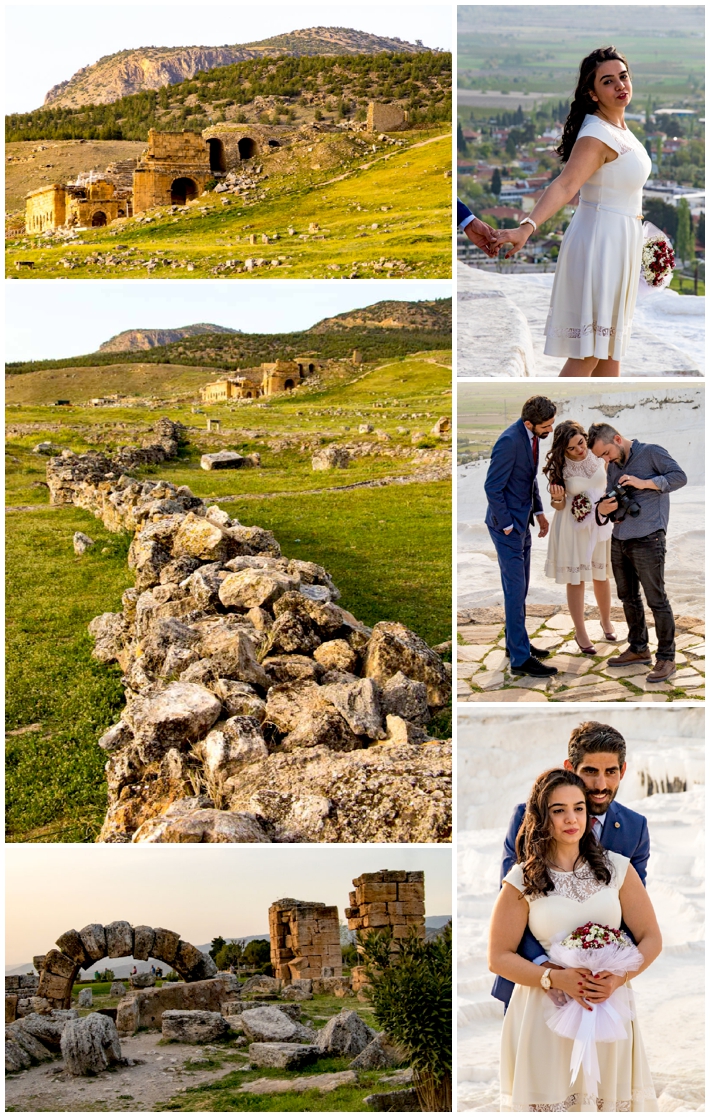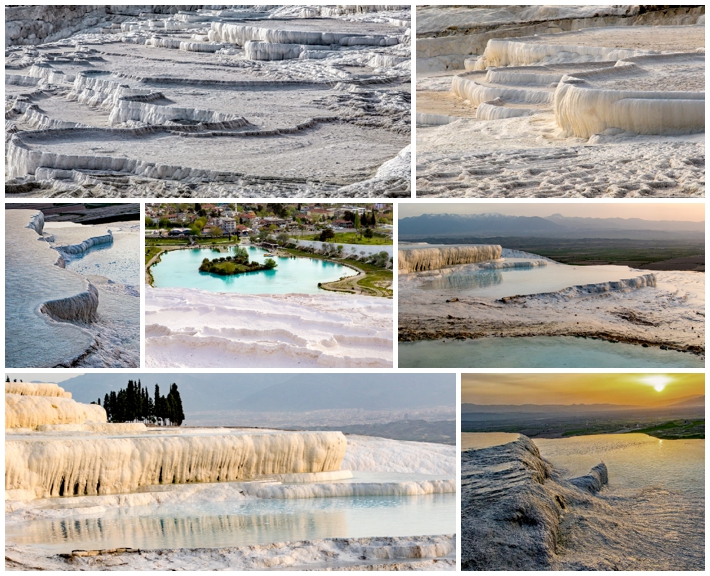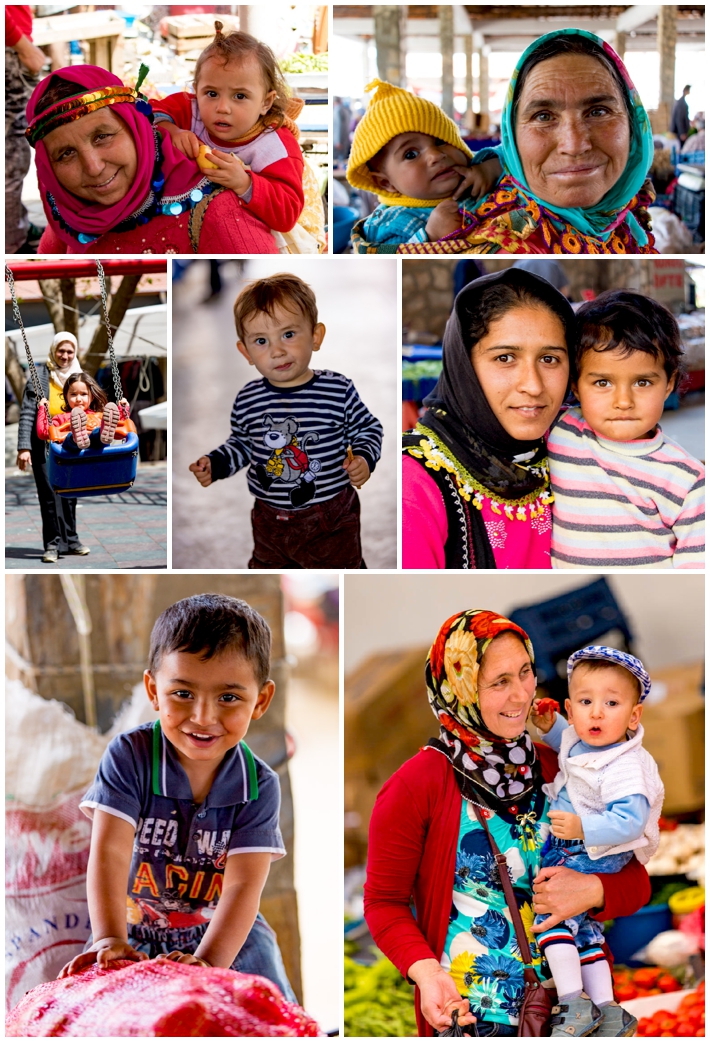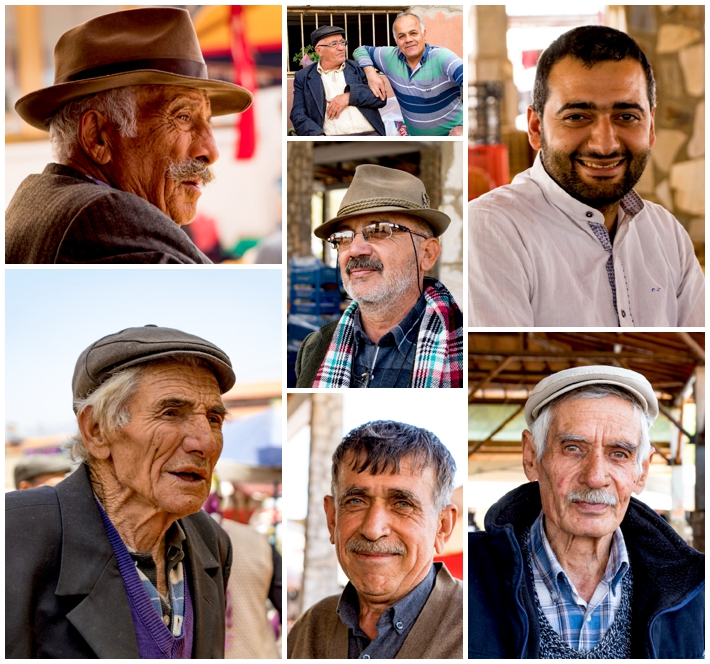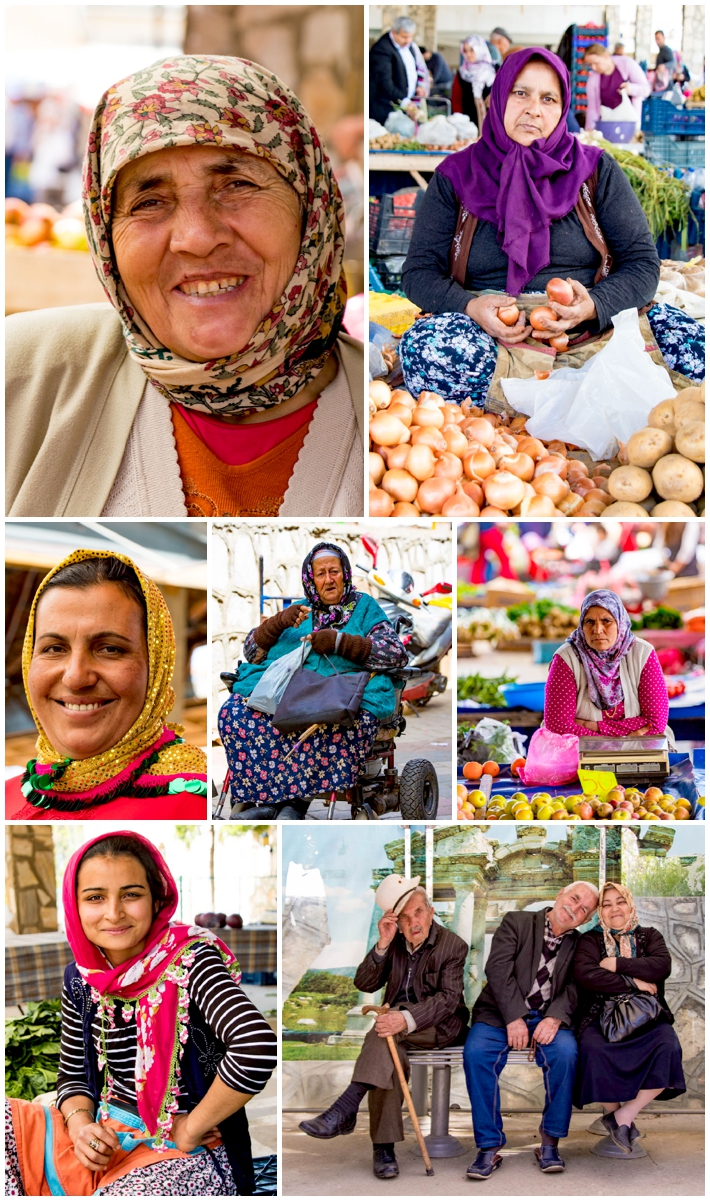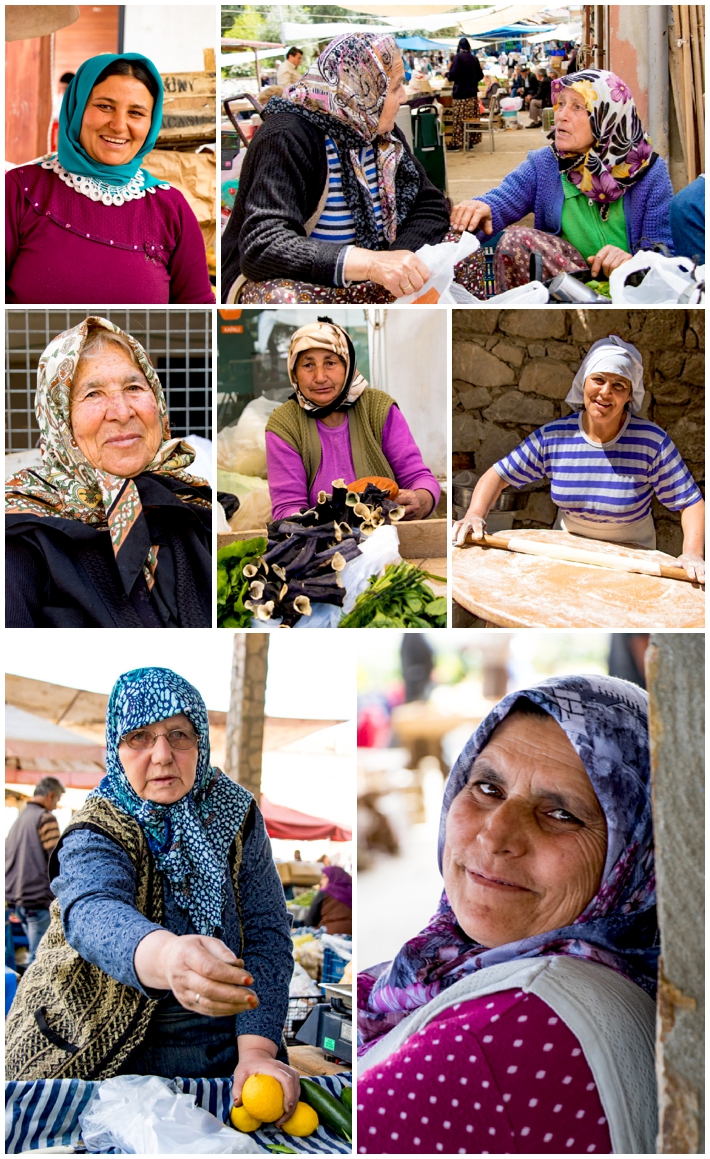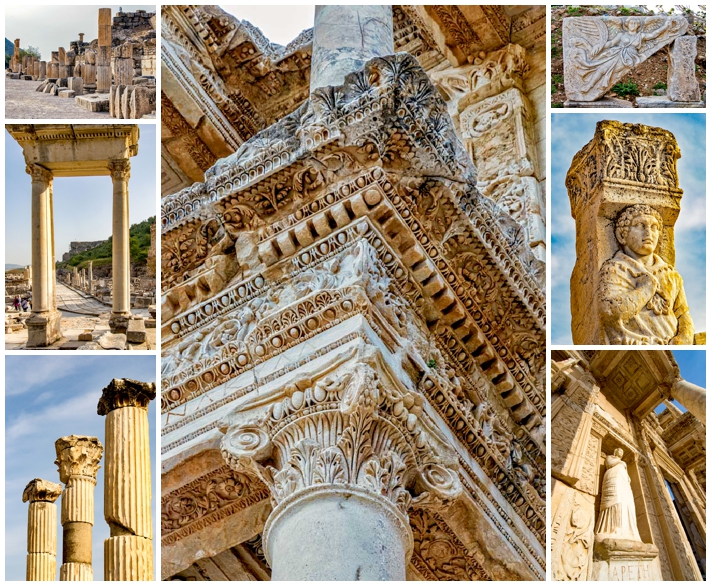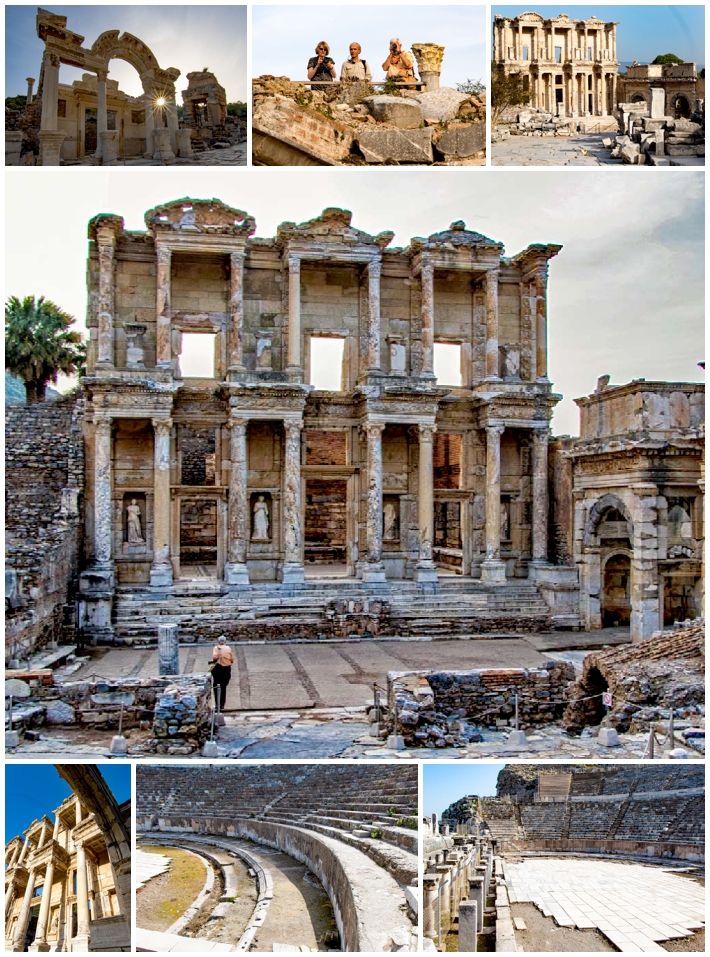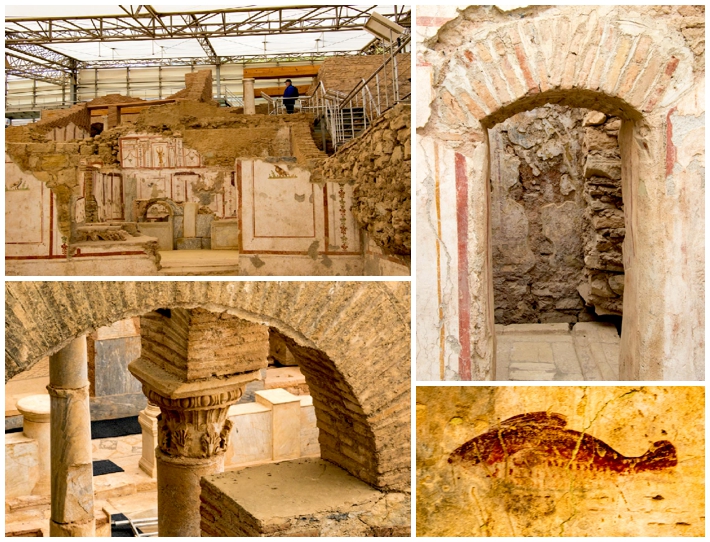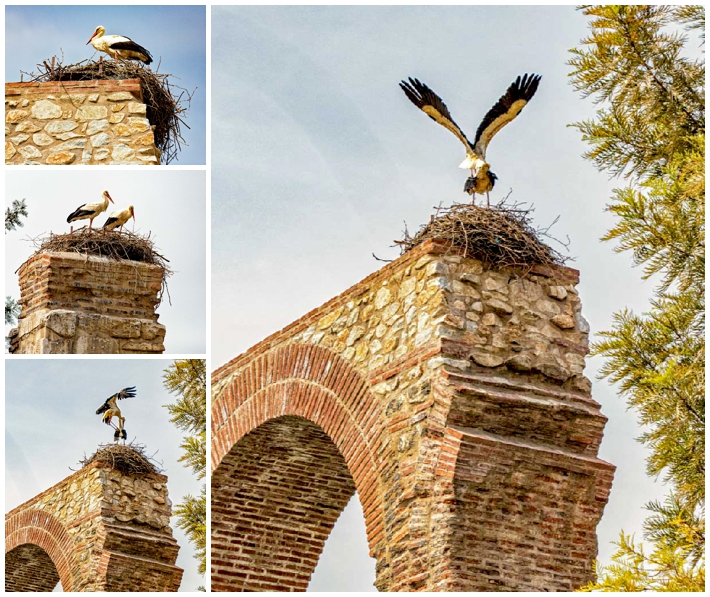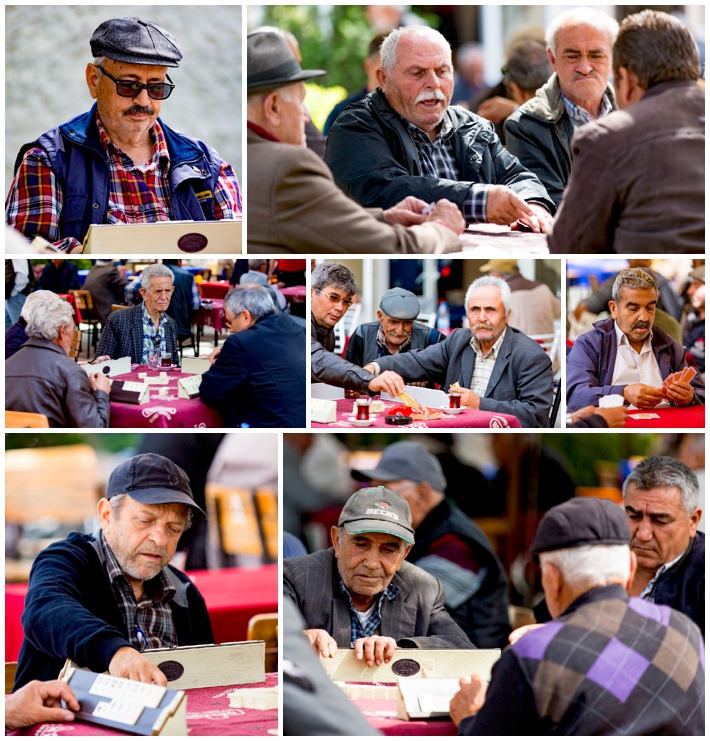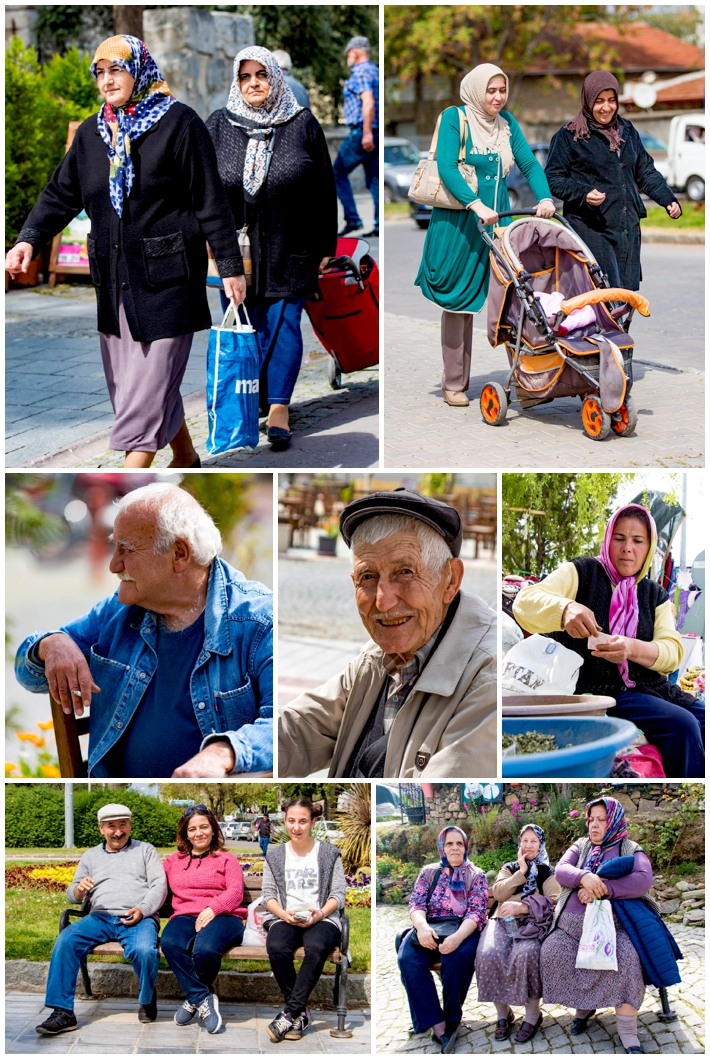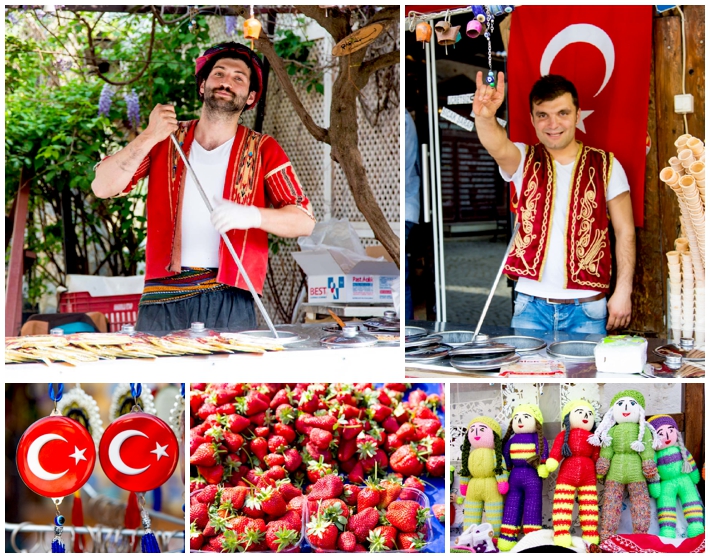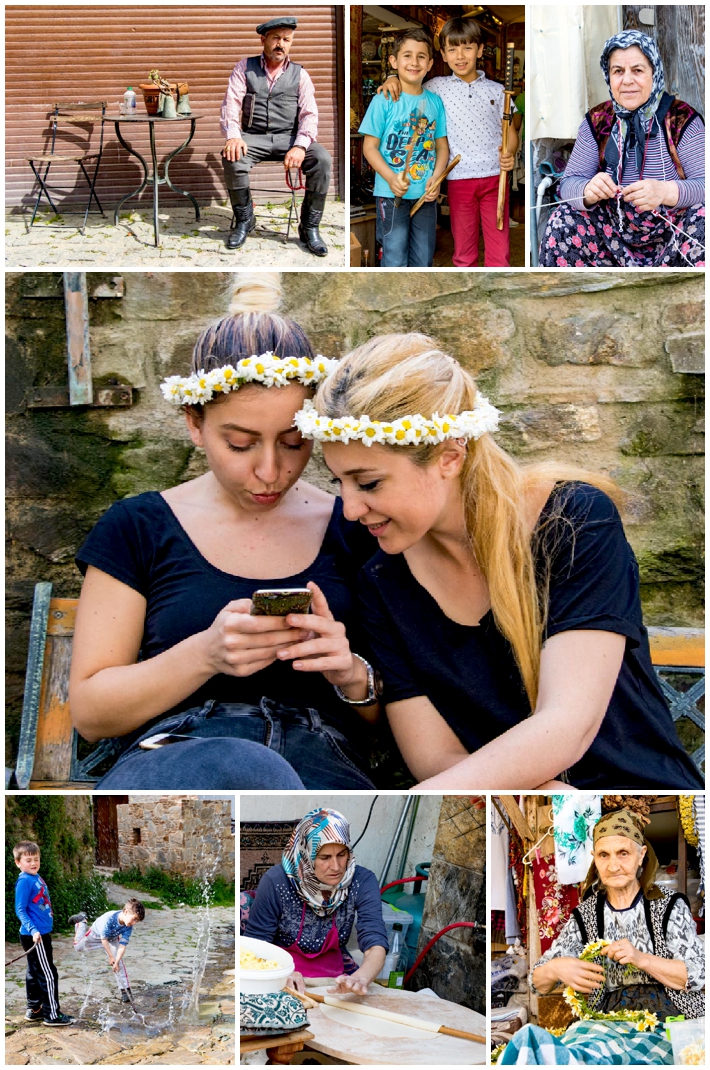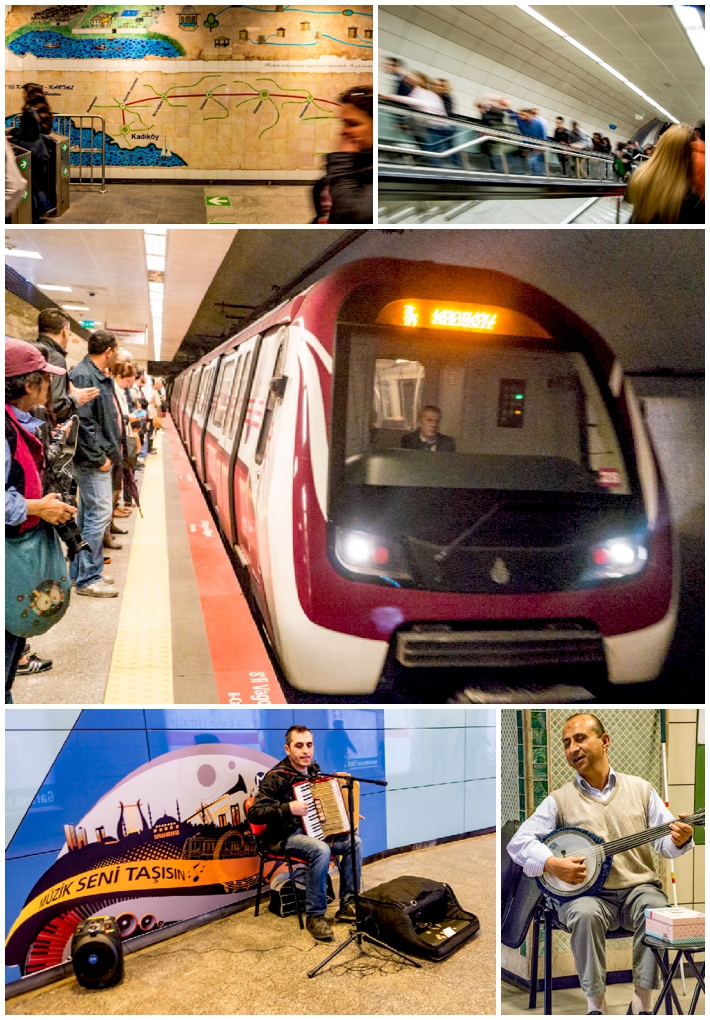
Today was an adventure in exploring transportation around Istanbul, shopping, dining, getting lost, and spending way too much money on stuff we can’t get in Ecuador. Let’s see how it unfolded…
Evelyn decided she wanted a new camera bag. She is in love with luggage, and still searching for the ideal bag that will weigh zero pounds, allow her to stuff with everything she owns, and still weigh zero. Hermione Granger had it in Harry Potter, so why shouldn’t Evelyn? I needed a new tripod plate for my tripod, since I learned that a separate plate was really needed on my monster Canon 70-200 f2.8 lens to keep things balanced and stable. Off we went in search of the “camera district” that we had passed two weeks ago when on tour with Melmet.
Deciding to go on public transportation, we started walking to the metro (aka subway) station. It looked pretty far on the map, but 10 minutes later were descending on the first of two very long escalators. First thing I noticed was that everyone was rushing to catch the next train, even though they came every 3 minutes — far more often than any California or Ecuadorian light rail. We missed the first train, but that just let us photograph the approaching cars a couple minutes later (center in above set). The other thing we noticed was the number of musicians playing for spare change. We have seen this in almost every subway we have taken around the world, but these musicians were almost all blind — a twist that surprised us.
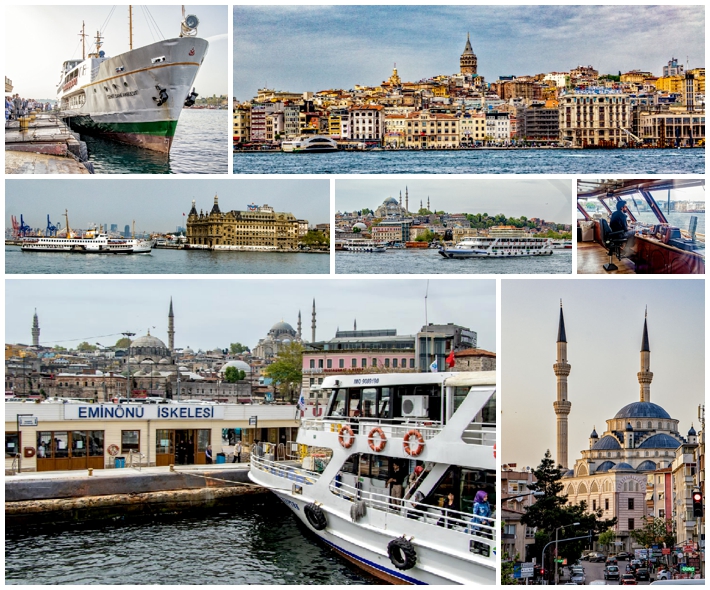
After watching the electronic map show our progress, and arriving at the last stop (at the ferry peer), we got off. During the trip, we saw two people separately give up their seat for older women. Evelyn commented that nobody gave her a seat, and I noted that just meant we did not look old enough to be seniors. Always a bright spot in every situation. ☺
From the subway, we walked about 500 feet until we saw a ferry with a sign giving the destination we wanted. A security guard blocked our entrance, and when we said the name of where we wanted to go, he pointed us to another entrance. Hey, he understood me! Of course, there were about 4 words (the 4 destinations in that building) that he probably heard a bazillion times, so his filter saw through my terrible pronunciation. Got on the ferry, and waited maybe 15 minutes for it leave. The trip was uneventful, taking about 20 minutes. The combination of metro and ferry cost a total of 5 TL, which is less than $2 US. Martin (the owner of the apartment we are staying in) had left us with two Istanbulkart cards with about $10 each on each, so we breezed through.
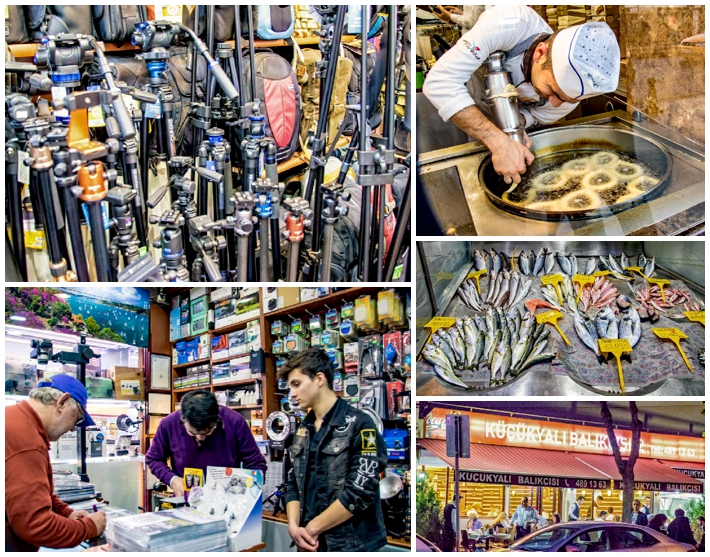
We got off the ferry… only to realize we had forgotten the note Mehmet (our photo tour guide) had given us with the name of the store and neighborhood. Well, it was around here somewhere, so we started walking. After a few blocks, we asked a security guard, whose English was not yet as good as our Spanish (in other words, pretty basic). Pointing at the camera Evelyn was carrying, pointing around at random, and shrugging got him to understand we were looking for a camera store. He pointed back the way we came and said “is in underground.” Huh? What we saw the prior week was certainly not underground? Decided it was only polite to go in the direction he pointed, and check it out.
Back to the ferry building, and then a bit further. Just as we were to give up, we saw a stairway leading underground some ways ahead. Tried it, and found that was a pedestrian underpass, chock full of trinket vendors, and leading across the busy main road we had been wondering how to cross. Bingo! The guard was right!
Coming out, I recognized a mosque we had visited a week earlier, and knew we were near the Spice Market. Comforting to be in almost known surroundings, but still no idea of where the camera stores were. Stopped and asked someone (more gesticulating) and made some progress. Asked again, and were again pointed in the same general direction. Just as I was about the ask the fourth time, we saw a FujiFilm store, and entered. We had reached our destination.
At each store, Evelyn would look at camera bags, and I would ask about the tripod plate (mostly by holding it up and saying “var mi?” which is Turkish for “do you have?”). Evelyn never hit it off with any of the bags, and each vendor pointed us to the next likely candidate to have my plate. After several stores, we ended up in the Canon store. Nirvana!
Everyone on the photo tour had been envious of my tripod that is so super-light, collapses to almost nothing for a backpack, yet is surprisingly stable. Evelyn saw a version of it in the Canon store, and started to get serious about that too. Then she asked about a Tamron 16-300mm lens for her Canon 7D that she had read about. We didn’t expect them to have it, but they did… and at a competitive price too. Hmmm… Since we are talking about lenses, I have read about the new version of the Tamron 28-300 for my Canon 5D too. Now we find ourselves negotiating for two lenses.
We decide to check next door at the other Canon dealer first, but he doesn’t have those lenses. They do have some bags that Evelyn starts to lust over though. I know this is going to be a long wait, so I walked a couple blocks to the next place that was suggested for my tripod plate. Eureka! They had it, so I bought two… and noticed an impressive array of tripods.
Returning to Evelyn, she had decided to buy the bag, so we did. Next door for both lenses, which we also bought (along with protective UV filters). Since Evelyn had been looking at tripods, and not impressed, we went back to the place where I bought the plate. Half an hour later, we walked out with a new tripod for her too. Looks even smaller and sleeker than mine, but costs 3 times as much. When we got home, we found hers was 1 inch longer and weighs exactly the same (just over 1 pound) as mine, so my envy was quieted some…
Loaded down with bags, we retraced our steps to the ferry building, and got on the ferry that took us back to the Asia side (so called because it is, literally in Asia, while the cameras stores in Istanbul are in Europe — the Bosphorus Strait splits the city, and also separates Europe from Asia). On the ferry, the man next to me started talking to me, in excellent English.
Zihad is a contract advisor for Saudi Aramco, an oil company in Saudi Arabia. He was there to get a hair transplant, which he proudly pointed to. When I asked why he came here, he replied “the best hair transplants in the world are in Istanbul. All my friends came here!” We chatted the entire way across, talking about his family (married 6 years with one 3 year-old daughter, both of whom were sleeping below) and job. When I told him we now live in Ecuador, he was fascinated, saying he had never met anyone that lived there before. As we arrived at the far shore and were parting, he said that maybe we could do a home exchange with his Saudi home. hmmm… Our Istanbul exchange was started by a conversation not all that different, so maybe…?
We then took the metro back to our stop. At the street, we stopped to look at our iPhone screen to decide which route to walk home (the way we knew, or some new streets?). A man stopped and asked if he could help, in perfect English (very rare on the Asian side). We first said we knew where we were, but then asked him for a restaurant recommendation. We showed the direction we were planning to go, and he insisted those are all fast food places that will deliver to your home. If you want good restaurants, he pointed to our iPhone map and showed where to go. We thanked him and headed in that direction. It was clearly the long way home, but… another adventure.
We walked… and walked… and walked… and realized it was hard to judge distances on that tiny iPhone map… We had pretty much given up and were ready to call it a failure. Evelyn noted a pharmacy a few doors down (they are everywhere in Istanbul!). We had discovered a drug here that seems to work as well as Pseudofed does in the US (but cannot be obtained in Ecuador), and wanted to get another box. Went in and got that. Evelyn then asked for a restaurant recommendation, and the owner pointed across the street with an enthusiastic smile.
We went across to a little seafood restaurant, named Kücükyali Balikcisi and sat down. Nobody spoke a word of English (which is common in this part of town), so the waiter took us to the seafood market next door (actually part of the restaurant, as seems common here) and pointed to various fish, giving an approximation of the English name — probably the only English he knew. We pointed. He picked one out and gave it to the chef. A bit later we had one of the best sea bass meals on our plates that we have ever tasted. We also had some excellent calamari rings (after some confusion, managed to learn that “tavir” means deep fried), and two Efes beers (the most common Turkish brand).
After dinner, we figured we were in for a long walk home. PointX (the iPhone app we use to return to key places, such as our apartment or hotels when in unknown cities) showed the basic direction to head. About a block later, we suddenly recognized the neighborhood. Though we had walked a long way to get the restaurant, it had actually been just a round-about way to get there, and we were only about 5 blocks from our apartment.
All in all, a very successful, long, exhausting, and wallet-busting day. ☺

